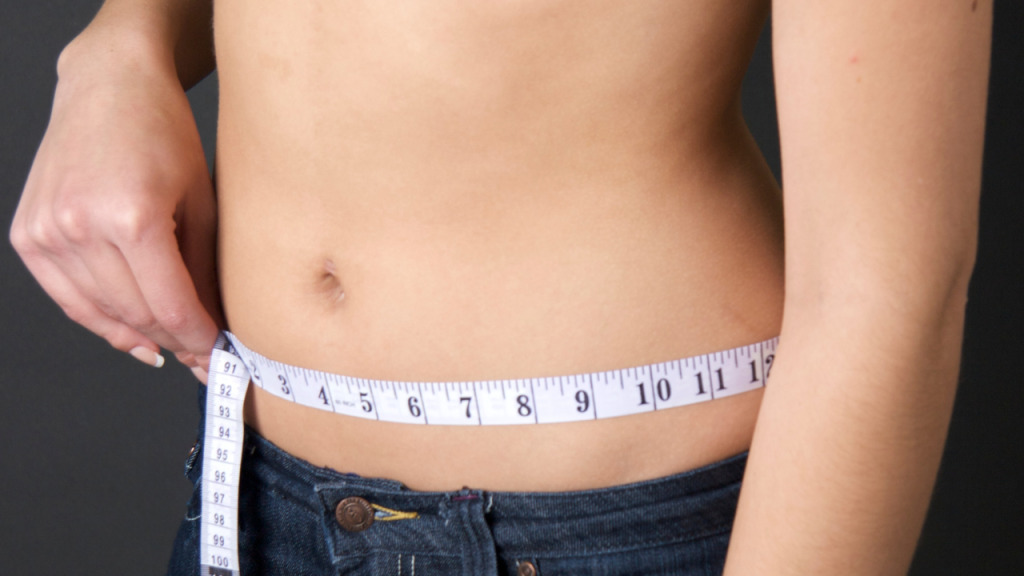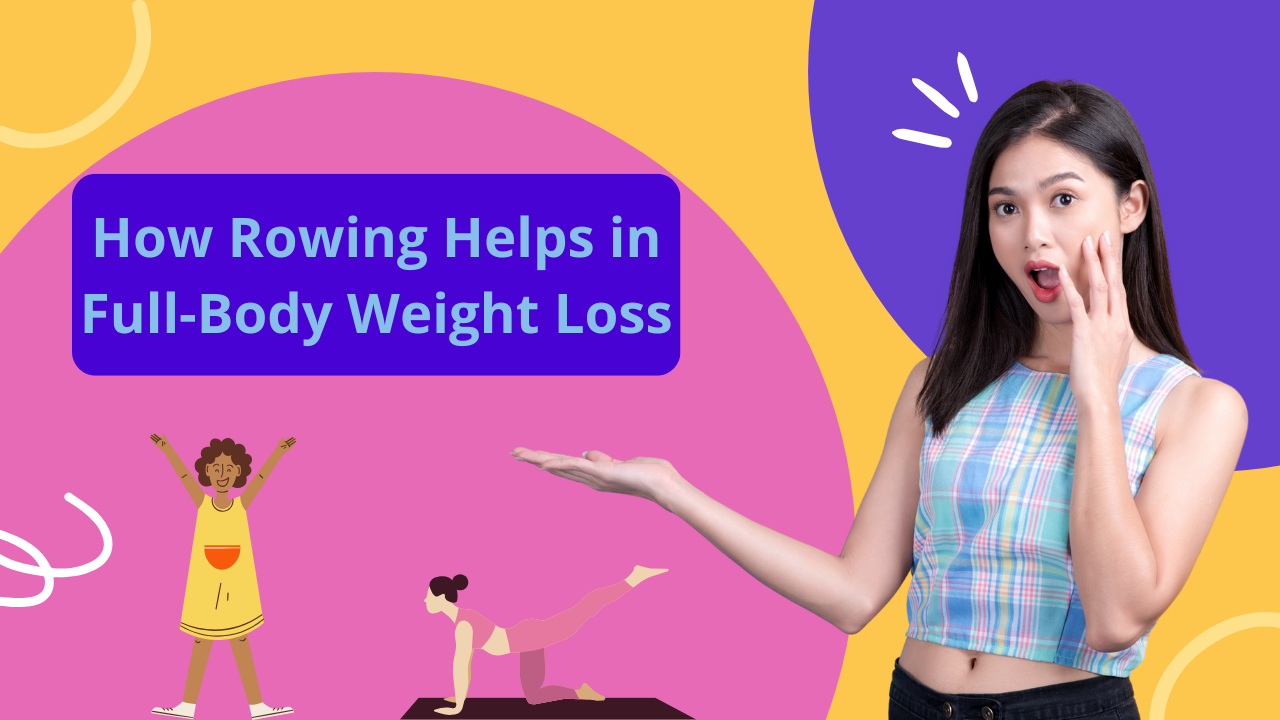Introduction
When it comes to losing weight and getting in shape, most people think of running, cycling, or hitting the gym for weightlifting. However, one of the most effective yet underrated exercises for full-body weight loss is rowing. Whether you’re using an indoor rowing machine or rowing on water, this activity engages multiple muscle groups, improves cardiovascular fitness, and burns a significant number of calories in a short time.
But why is rowing such a great weight-loss tool? Is it superior to other cardio exercises? How can you effectively add rowing to your exercise routine? In this article, we will take a close look at the science of rowing and weight loss, compare it to other workouts, and give you practical tips on how to get the most from your workouts.
Why Rowing is a Powerful Tool for Weight Loss
1. Rowing is a Full-Body Workout

As opposed to running or cycling, which predominantly work the lower body, rowing is a full-body exercise that engages large muscle groups, such as:
- Legs (quadriceps, hamstrings, calves) – Power muscles that come into play in the push-off.
- Core (abdominals, obliques, lower back) – Contracted throughout to keep the body stable.
- Back (rhomboids, latissimus dorsi, trapezius) – Responsible for the pull.
- Arms (forearms, biceps, triceps) – To pull the handle closer to the body. (Also provides, in part, the rotational force necessary for the device to function)
- Shoulders and Chest – Help to stabilize posture and coordinate movement.
2. Rowing Burns a High Number of Calories
Caloric expenditure is an important factor in losing weight, and rowing is one of the superior calorie-burning sports out there. The calories burned will be determined by your weight, level of effort during the workout, and the duration of the workout.
| Weight (lbs) | Moderate Rowing (30 min) | Vigorous Rowing (30 min) |
|---|---|---|
| 125 | ~210 calories | ~255 calories |
| 155 | ~260 calories | ~316 calories |
| 185 | ~311 calories | ~377 calories |
(Source: Harvard Health Publishing)
This implies that a 1-hour rowing workout at high intensity will burn between 600-800 calories, depending on the person. When paired with a healthy diet, rowing can assist in generating the required caloric deficit to lose weight.
3. Rowing Increases Metabolism

Rowing not only burns calories while exercising but also enhances the afterburn effect (excess post-exercise oxygen consumption or EPOC). This is where your body still burns calories after your workout as it recovers.
Also, since rowing aids in developing lean muscle mass, your resting metabolic rate (RMR) will rise. The greater the amount of muscle you have, the more calories your body will burn while resting, which makes it simpler to keep off weight over time.
4. Rowing is Low-Impact and Joint-Friendly
Most weight loss workouts, including running and HIIT training, are tough on the joints, particularly for individuals with knee or ankle issues. Rowing, however, is a low-impact exercise that minimizes joint stress while offering a high-intensity workout. It is thus perfect for individuals of all fitness levels, including injury recovery.
5. Rowing Improves Cardiovascular Health
Rowing is a great aerobic exercise, which conditions the heart and lungs and enhances endurance. A good cardiovascular system causes the body to burn fat more effectively and boosts general stamina, so it’s simpler to perform other exercises.
Rowing vs. Other Cardio Workouts: Which is Best for Weight Loss?
To see how rowing stacks up against other top cardio exercises, let’s compare some of the main differences:
Rowing vs. Running
✅ Rowing is easy on joints, whereas running is tough on them.
✅ Rowing burns more calories per minute than running at a moderate intensity.
✅ Rowing works the upper body, whereas running primarily engages the lower body.
Verdict: If you have joint problems or prefer a whole-body workout, rowing is the better option.
Rowing vs. Cycling
✅ Rowing engages the core and arms, whereas cycling mainly engages the legs.
✅ Rowing consumes more calories per workout because of greater muscle activation.
✅ Cycling is easier to maintain for extended periods, but rowing offers greater intensity in shorter workouts.
Verdict: For a more effective calorie burn, rowing is the winner. If you like longer endurance exercises, then cycling is best.
Rowing vs. Swimming
✅ Rowing offers more resistance, which will tone your muscles more quickly.
✅ Swimming involves more coordination, but it’s simpler to learn how to row.
✅ Both are low-impact and excellent for joint care.
Verdict: For strength development and calorie burn, rowing is a superior option.
How to Add Rowing to Your Weight Loss Program
1. Begin with Correct Rowing Technique
Utilizing the proper technique is important to avoid injuries and achieve maximum calorie burn. Take these steps:
- The Catch – Sit knees bent, arms out, and take hold of the handle.
- The Drive – Drive with your legs, activate your core, and pull the handle.
- The Finish – Slightly lean back, with a tight core.
- The Recovery – Come back to the starting position in a controlled fashion.
2. High-Intensity Interval Training (HIIT) Rowing Workouts
HIIT workouts alternate between high and low-intensity intervals, making them effective for fat loss. Try this routine:
- Warm-up: 5 minutes of light rowing.
- Work: Row at max effort for 45 seconds.
- Rest: Row at a slow pace for 30 seconds.
- Repeat 10-15 times.
- Cool-down: 5 minutes of slow rowing.
3. Rowing for Endurance and Fat Burning
If you like steady-state cardio, shoot for 30-45 minutes of moderate rowing at 60-70% of your max heart rate. This approach promotes fat oxidation and develops stamina.
4. Combine Rowing with Strength Training
To develop muscle while shedding fat, pair rowing with strength training:
- Day 1: Rowing + Lower Body Strength Training
- Day 2: Rowing + Upper Body Strength Training
- Day 3: Rest or Active Recovery
- Day 4: HIIT Rowing + Core Work
- Day 5: Endurance Rowing + Full-Body Strength
Success Stories: Real People, Real Results
John’s 30-Pound Weight Loss Journey
John, a 38-year-old office worker who struggled with weight gain. After rowing 30 minutes per session, 5 times per week, he lost 30 pounds in 3 months. His takeaways? Consistency, intensity, and diet control.
Sarah’s Transformation with Rowing
Sarah transitioned to rowing after a knee injury due to running. Within six months, she saw muscle definition, core strength, and improved endurance, all without joint aching.
Tips for Optimizing Weight Loss with Rowing
✅ Sustain a Caloric Deficit – Pair rowing with a balanced diet.
✅ Gradually Raise Intensity – Gradually increase rowing duration and intensity.
✅ Monitor Progress – Employ fitness apps or a rowing machine display.
✅ Be Consistent – Shoot for a minimum of 3-5 sessions per week.
Conclusion
Rowing is one of the best full-body exercises for weight loss, muscle toning, and cardiovascular health. With high calorie burn, low impact on joints, and total-body activation, it’s an excellent workout for anyone looking to shed pounds and build fitness efficiently.
So, if you’re searching for a fun, effective, and sustainable way to lose weight, give rowing a try—you won’t regret it! ????♀️
Meta Description:
Rowing is a strong full-body exercise for fat loss, caloric burn, muscle gain, and increased stamina. Mastering techniques, exercises, and pointers for maximum gain.
Readmore…https://totalinsights.online/wp-admin/post.php?post=29023&action=edit

